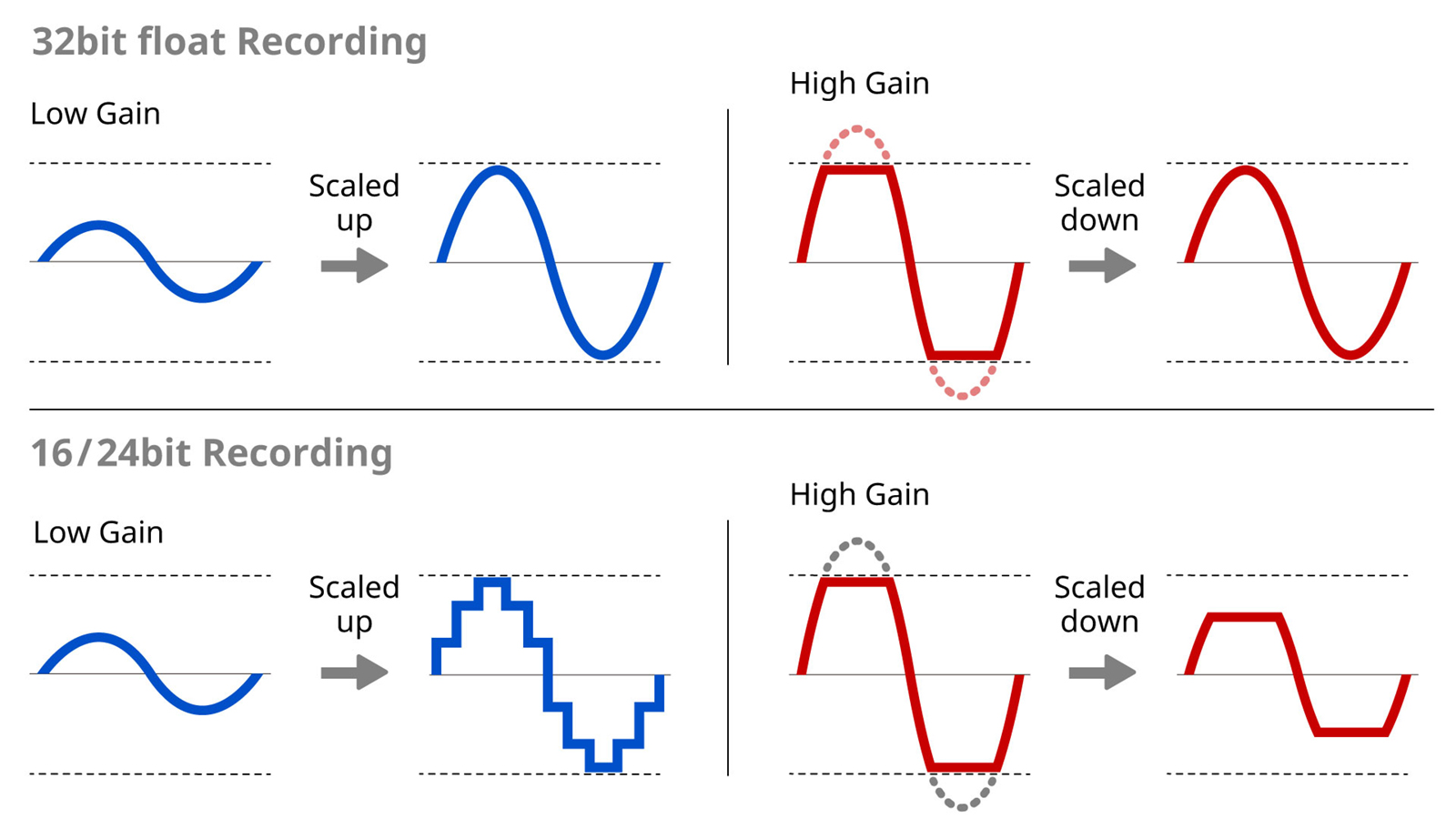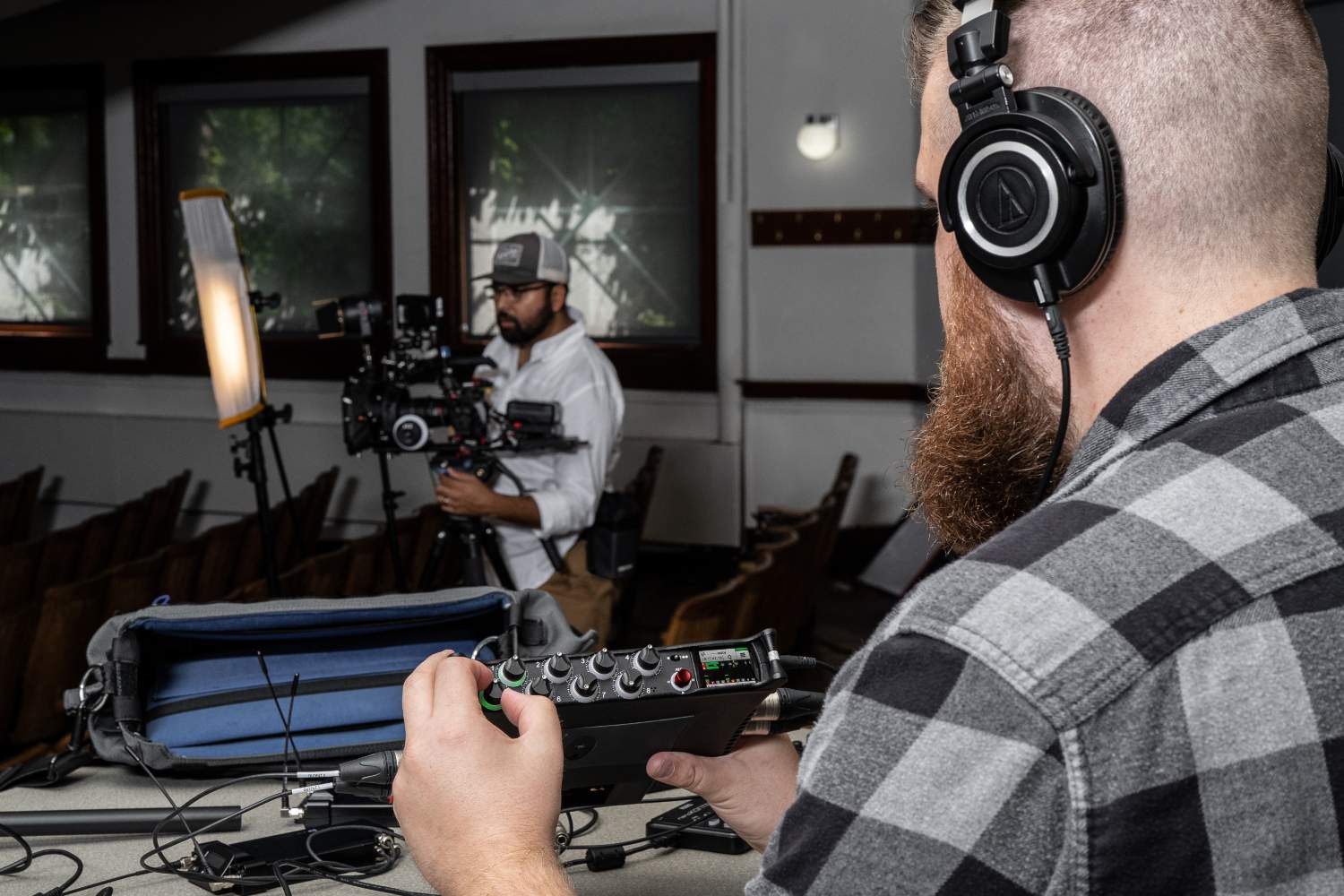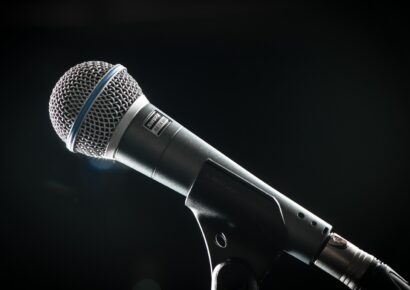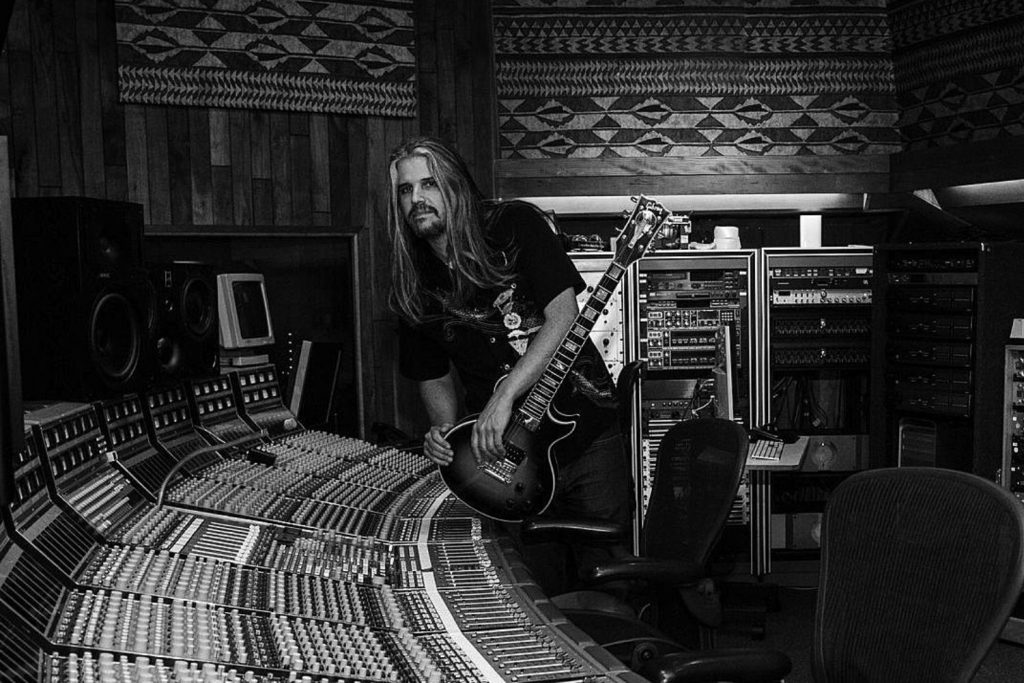32-bit Float is a term that’s becoming more and more common in the audio industry.
32-bit Float is a term that’s becoming more and more common in the audio industry, with it having been added as a feature to a lot of film, TV, streaming, podcasting and content creation equipment. Reviews, ads and announcements boast about how it makes recording easy, being free of the risk of distortion, with unparalleled dynamic range. But what is it? And how does it float? Do you need it? And if so, why?
Read all the latest product & music industry news here.
Bit depth refers to the capacity of the converter to capture amplitude information between silence and 0dBFS (full scale), a.k.a. the point of digital distortion. It’s important to delineate digital and analogue distortion, as driving into analogue components produces a pleasant warmth and grit, while digital distortion is a series of harsh noise, pops and clicks.
8, 16 and 24-bit recording
Let’s clarify 8, 16 and 24-bit sound. Bits are strictly a digital recording equation, referring to how the digital converters capture dynamic range of an analogue signal.
With bit depth on a y-axis, and sample rate on the x-axis, a sound wave is sampled at varying points over time. The vertical y-axis captures amplitude information, while the horizontal x-axis captures frequency information over time.
The more often the analogue waveforms are sampled, the closer they are to the original waveform. Sample rate is usually split up into 44.1kHz and 48kHz, or 88.2kHz and 96kHz, meaning that over one second of time, the waveform is monitored 44,100 times per second at 44.1kHz, 48,000 times per second at 48kHz etc. While sample rate refers to samples taken over a time, bit depth refers to the total dynamic range available for the converter to capture it.
8-bit audio is almost comically low-quality, 80s video games often featuring 8-bit soundtracks to reduce storage space on the games. It sounds the way it does because the audio is being forced through just 8 steps of dynamic information, the nuance and subtle shifts being lost.
24-bit audio has been the standard for some time, offering enough amplitude information for converters to capture to be reasonably accurate recording of a sound in a physical space. While sample rate refers to how many samples are being taken over a fixed period of time, varying bit depth allows more values to be captured before the point of distortion.
16-bit allows for 65,536 amplitude values between silence and distortion, 24-bit allows for 16,777,217 values and 32-bit allows for 4,284,967,296 amplitude values.
The digital audio is captured with a series of 1s and 0s, the converters turning audio into waveforms that fit the possible values of their set bit depth. The waveform is being quantized to fit either value, creating a noise floor as the converters attempt to capture the audio as accurately as possible. The noise floor is the low volume white noise you might’ve noticed when turning audio clips up too much!
While admittedly, 24-bit and even 16-bit audio is reasonably hi-fidelity to human ears, the expansive difference between this noise floor and distortion in 32-bit Float is what makes the difference, allowing us to capture a massive dynamic range.

32-bit Float
Setting your gain levels for an incoming signal make sure the source you’re recording is far away enough from the noise floor, as well as leaving headroom before distortion for maximum clarity. 32-bit recording creates much more space for that source to exist about the noise floor, with a massive amount of headroom before distortion, or 0dBFS. 32-bit Float is referred to as ‘Float’ because instead of allowing a set amount of samples to be taken per ‘bit’ of bit depth, it instead uses information encoded in a binary variation of scientific notation. The notation, as opposed to a fixed value, allows 32-bit Float to convey much larger representation of amplitude values than 16 and 24-bit.
For a little comparison, 16-bit audio allows for 96dB of dynamic range, while 32-bit Float allows for 1,528dB of dynamic range. 32-bit Float captures beyond what we define as sound on Earth.
Why?
32-bit Float allows you to capture clear, distortion free digital audio, mostly without the need to set gain. Even the quietest sounds, like a whisper on a film set, will be well above your system’s noise floor, while the roar of a motorbike is well under the point of distortion.
This gives you the freedom to adjust levels of individual sounds after the fact, so as long as you’re recording, you’ll be able to turn things up and down for a cohesive mix without bringing up the noise floor.
Who?
For this reason, content creation and streaming products are shifting to implement 32-bit Float converters. Podcasting and YouTubing are generally created in a controlled environment, but you can be confident that you can capture (and adjust after the fact) all the audio from each of your guests.
For film and TV, performances can be dynamic, with foley, effects and other sounds sometimes being very quiet compared to dialogue, and these quiet sounds have traditionally been too close to the noise floor to bring up too loud. 32-bit Float solves this problem, allowing you to capture audio that’s supremely flexible after the fact.
32-bit Float affords you the freedom to automate more extreme dynamic changes, or flatten them out if need be. 32-bit interfaces and converters also allow you to dip a toe into the film and TV world, giving you the ability to accept work across different mediums without risk of handing in low-quality audio!
Read more about 32-bit float here.







